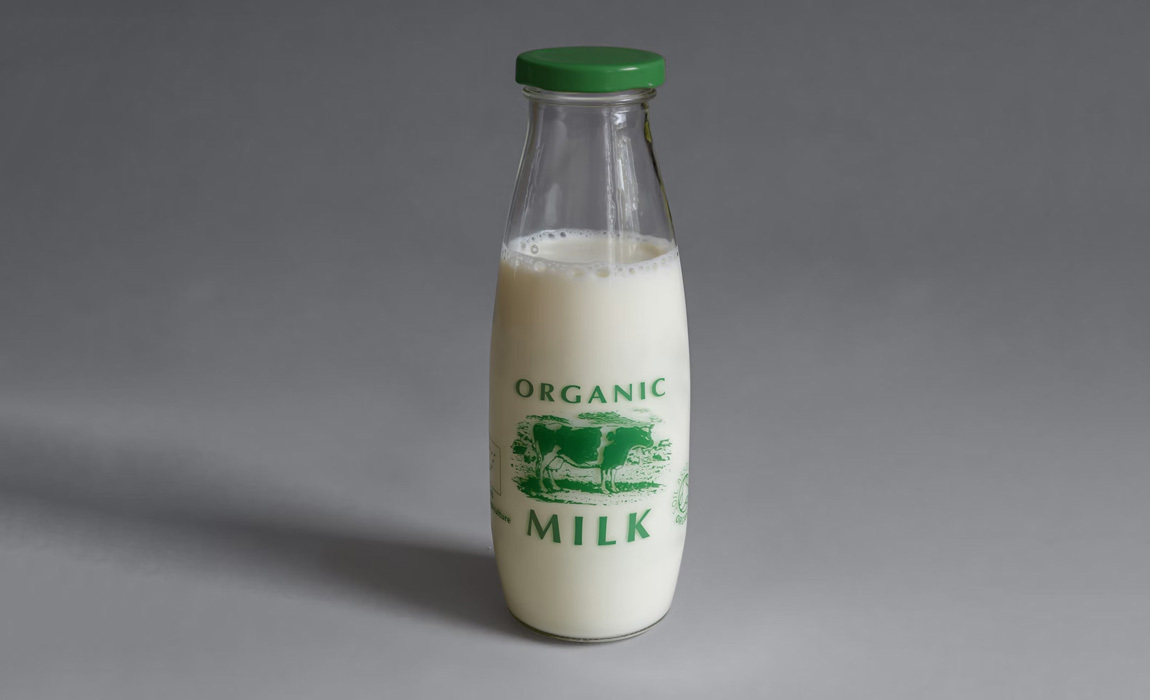When you're shopping for your family, the fact that organic milk can last up to a month might seem too good to be true. But for busy fathers juggling work, family time, and an active lifestyle, understanding the real differences between organic and regular milk can help you make better nutrition decisions for everyone at home.
What Men's Health Issues Concern You Most?
Understanding organic milk helps you make informed decisions that benefit your health, your family's nutrition, and your household management.
- Extended shelf life means fewer grocery trips - Ultra-high temperature processing gives organic milk up to 30 days of freshness
- Clean production practices for active lifestyles - Organic standards reduce exposure to synthetic additives while providing the same protein content for muscle maintenance and recovery
- Family nutrition without antibiotics or synthetic hormones - Peace of mind knowing what you're serving your kids and yourself
- Better storage flexibility for busy schedules - Longer-lasting milk works better with irregular shopping schedules and meal planning
- Environmental benefits align with family values - Organic dairy farming avoids synthetic fertilizers and pesticides, which helps reduce soil degradation and water contamination
- Understanding Organic Milk: The Basics Every Dad Should Know
- Why Organic Milk Actually Lasts Longer
- Health Benefits That Matter for Active Men and Families
- The Trade-Off: Flavor Differences You Should Know
- Smart Shopping and Storage for Busy Fathers
- How to Know When Any Milk Has Gone Bad
- Making the Right Choice for Your Family
- Making Informed Dairy Decisions Based on Science, Not Marketing
Understanding Organic Milk: The Basics Every Dad Should Know
Organic milk comes from cows raised under strict natural farming conditions set by the United States Department of Agriculture (USDA). For milk to earn the organic label, farmers must follow specific guidelines that matter to your family's health. The cows cannot receive antibiotics during milk production, no synthetic growth hormones are allowed, at least one-third of their diet must come from pasture, and no conventional pesticides can be used.
These standards mean you're getting milk in its most natural form - something that matters when you're fueling your own workouts and feeding growing kids who need clean nutrition.
Why Organic Milk Actually Lasts Longer
Contrary to popular belief, organic milk doesn't last longer simply because it's organic. The secret lies in how it's processed. While all commercial milk undergoes heat treatment, organic milk gets an extra step called ultrahigh temperature (UHT) processing.
During UHT processing, organic milk is heated to 280 degrees Fahrenheit for about three to four seconds. Regular milk, by comparison, is heated to 161 degrees Fahrenheit for 10 to 15 seconds. This intense but brief heat treatment eliminates virtually all bacteria and microorganisms, giving organic milk its impressive shelf life.
The need for UHT processing stems partly from organic farming practices. Since organic cows can't receive antibiotics - a common bacterial control method - the milk requires more thorough processing to ensure safety. This actually works in your favor as a busy father, giving you more flexibility with grocery shopping and meal planning.
Health Benefits That Matter for Active Men and Families
Organic milk offers several advantages that align with men's health goals and family nutrition needs. The protein content in organic milk supports muscle recovery after workouts and provides sustained energy throughout demanding days, while clean production practices reduce exposure to synthetic additives. According to nutrition experts, the absence of synthetic hormones and antibiotics means cleaner nutrition for both you and your children.
For families, organic milk provides peace of mind about what you're serving at breakfast, in smoothies, or with bedtime snacks. The organic farming practices that avoid synthetic fertilizers and pesticides also support environmental sustainability - an important consideration for fathers thinking about the world they're leaving for their kids.
Some studies suggest that organic farming practices result in milk with higher levels of beneficial omega-3 fatty acids and antioxidants, though these differences are generally modest.
The Trade-Off: Flavor Differences You Should Know
The UHT processing that gives organic milk its extended shelf life does create a slight flavor change. During ultra-heating, some naturally occurring sugars in the milk caramelize, making the sweetness more noticeable. Most people find this difference negligible, but some notice a slightly sweeter taste compared to regular pasteurized milk.
This flavor difference is usually more apparent to adults than children, and many families adjust quickly. If you're introducing organic milk to your household, starting with cooking and baking applications can help everyone get used to the taste.
Smart Shopping and Storage for Busy Fathers
Understanding organic milk's longer shelf life can transform your grocery shopping strategy. Unopened UHT organic milk can last up to 30 days or more, but once opened, it should still be used within 7-10 days, just like conventional milk. This makes it ideal for:
- Families with unpredictable schedules who can't shop weekly
- Men who travel for work and need milk to last while they're away
- Households that use milk primarily for cooking and coffee rather than drinking
- Backup planning for busy weeks when grocery runs get delayed
The extended unopened shelf life gives you more flexibility in grocery shopping, though you should still refrigerate organic milk and follow the same opened-milk timeline as conventional milk.

How to Know When Any Milk Has Gone Bad
Regardless of processing method, all milk eventually spoils. Here are reliable ways to check if your milk is still good:
Visual Inspection
Check if the milk maintains its natural white color. Any yellowing or off-color appearance indicates spoilage, regardless of the expiration date on the package.
The Heat Test
Pour a small amount into a clear glass and warm it briefly in the microwave. Spoiled milk will form lumps and show uneven texture when heated - a quick way to test questionable milk before using it in coffee or cooking.
Storage Check
Consider how the milk has been stored. Even organic milk with extended shelf life needs consistent refrigeration. If it's been at room temperature too long, err on the side of caution.
Smell Test
This remains the most reliable method. Fresh milk has virtually no odor, while spoiled milk develops a distinct sour smell that's immediately recognizable.
Making the Right Choice for Your Family
Choosing between organic and regular milk depends on your family's priorities, but understanding the facts helps you make an informed decision. Organic milk's extended shelf life offers practical advantages for busy households, while its production standards align with many families' values about natural nutrition.
The key is knowing what you're getting: longer-lasting milk due to processing methods, cleaner production standards, and slight flavor differences that most families adapt to quickly. Whether you choose organic or regular milk, the most important factor is ensuring your family gets the nutrition they need from a source you trust.
Making Informed Dairy Decisions Based on Science, Not Marketing
The extended shelf life of organic milk isn't magic - it's science applied to meet the practical needs of modern families. Understanding why organic milk lasts longer, how to properly store it, and what benefits it offers helps you make confident decisions in the grocery aisle. Interestingly, this same UHT processing technology that extends organic milk's shelf life is why you can find shelf-stable milk in the international foods aisle that doesn't need refrigeration until opened - proving that food science often delivers practical benefits that marketing messages don't fully explain.
Hey James Hills wants you to share this!

